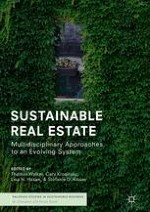2019 | OriginalPaper | Buchkapitel
6. Information or Marketing? Lessons from the History of Private-Sector Green Building Labelling
verfasst von : Jeremy Gabe, Pernille H. Christensen
Erschienen in: Sustainable Real Estate
Verlag: Springer International Publishing
Aktivieren Sie unsere intelligente Suche, um passende Fachinhalte oder Patente zu finden.
Wählen Sie Textabschnitte aus um mit Künstlicher Intelligenz passenden Patente zu finden. powered by
Markieren Sie Textabschnitte, um KI-gestützt weitere passende Inhalte zu finden. powered by
